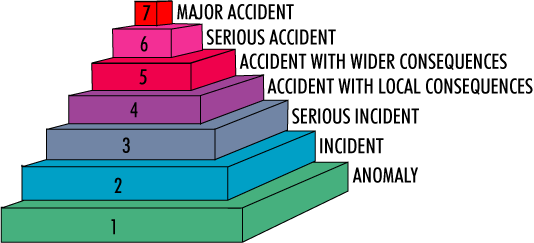Sadly, As I Said Sunday
It is tragically unfortunate that my suggestions on what would transpire at the nuclear plants in Japan have apparently followed that course. I wish I would have been wrong, but even though I am a biologist and not a physicist, I have read numerous books on nuclear power over the years, which allowed me to see the horror that was likely to transpire. Here is a new update that I have found informative from the
NY Daily News:
Japan Nuclear Crisis: Meltdown at Fukushima Daiichi Plant May Now Be InevitabilityBy Richard Sisk and Helen Kennedy
NY Daily News
Americans were told to flee a wide area around Japan's failing nuclear plant on Wednesday as federal officials warned it might be too late to avoid meltdown.
So much radiation may have leaked at the Fukushima Daiichi plant that workers may not be able to get close enough to fix it, said Gregory Jaczko, head of the Nuclear Regulatory Commission.
"We believe that radiation levels are extremely high, which could possibly impact the ability to take corrective measures," Jaczko said.
He said all water had apparently boiled away from the cooling pool at Reactor No. 4, where 1,097 tons of spent fuel rods are stored.
"I hope my information is wrong. It's a terrible tragedy for Japan," Jaczko said.
When exposed to air, fuel rods first emit hydrogen gas - apparently the cause of an explosion late Monday that blew a 26-foot-wide hole in the side of the reactor building.
The rods then continue to overheat, releasing more radioactive gases that would vent through the new hole directly to the outside air.
Eventually, the rods could get hot enough to melt, releasing lethal quantities of additional radioactivity.
"The actual radiation releases could approach that category of Chernobyl," warned former NRC Commissioner Victor Gilinsky, referring to the worst nuclear accident in history.
Tokyo Electric said it was trying to hook up a new power line to the plant to restart cooling pumps, submerge the rods and ratchet down the crisis.
Military helicopters began dumping water on Reactor No. 3 to cool the rods at the core, officials said. Authorities are also considering having the national police use water cannons to spray the reactor.
Levels of radiation had quadrupled in Tokyo, 150 miles away, sparking panic in the city and alarm internationally.
The State Department told Americans within 50 miles of the plant to flee. The Japanese government's evacuation zone is only 12 miles.
White House press secretary Jay Carney said the more stringent American alert was based on "our independent analysis of the deteriorating situation."
Several other countries followed Washington's lead and told their citizens to leave Japan, while the Swiss and French sent planes to ferry their nationals home.
"We're not far enough away," fretted Cory Koby, 41, a Canadian high school teacher in Sendai, the quake-hit city 40 miles from the plant.
"We stayed indoors all day today," said Koby, whose home withstood the earthquake and tsunami, but was now seeing ominous radiation measuring trucks go by.
Officials insisted that radiation levels were dangerous only in and around the plant itself.
Chief government spokesman Yukio Edano said radiation 12 miles from the plant was clocked at 0.33 millisieverts per hour - the rough equivalent of three chest X-rays an hour.
"If someone were to stay in this area 24 hours a day for a whole year, they might suffer health problems. But if you stay for several hours - or days - in this level of radiation, you will not suffer health problems," he said.
But few were listening.
Tokyo's airports were full of foreigners leaving the country, and train stations were packed with Japanese families fleeing to Osaka and other points south.
The European Union urged member countries to check Japanese food imports for radiation.
At Fukushima, heroic teams of engineers continued to risk their lives inside the plant, trying to stave off a meltdown.
At one point late Tuesday, radiation levels spiked so high that all workers had to be evacuated briefly.
The terrible destruction from Friday's quake and tidal wave was hampering efforts to help evacuees and get materials to the plant.
Ships are left aground among destroyed houses in Kesennuma. (AP photo/Kyodo News)
At least 10,000 people were killed in the natural disaster, half a million were left homeless and roads to the area near the plant are blocked with debris.
Snow fell Wednesday, just adding to the misery of survivors still digging in the rubble for loved ones.
Underscoring the gravity of the situation, Japanese Emperor Akihito made the first-ever live imperial TV address to urge his people not to lose hope.
"I am deeply concerned about the nuclear situation because it is unpredictable," said the widely revered 77-year-old emperor. "I hope things will not get worse."
TV stations interrupted coverage of the disaster to carry Akihito's historic address live. His father, Hirohito, was the first emperor to speak on the radio in 1945 when he announced Japan's surrender after another nuclear crisis - the atomic bombs dropped on Hiroshima and Nagasaki.
* * * * *
So very, horribly sad. I am at a loss for words.
PipeTobacco













